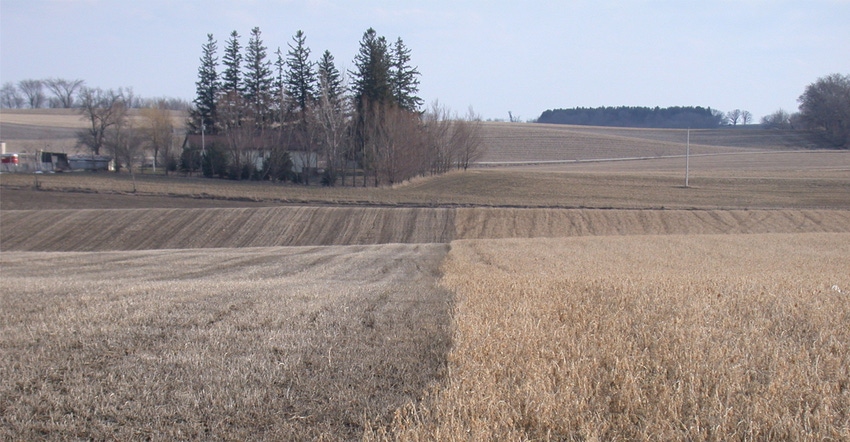July 10, 2020

In August, there are always questions on when to make the last alfalfa cutting for the growing season and still allow enough time for plants to build carbohydrate reserves in the crown and upper taproot before the first killing frost. The most common answer to this question is to harvest at least six weeks before the killing frost of 25 degrees F.
The average occurrence of an alfalfa killing frost in northern, central and southern Iowa is Oct. 25, Oct. 28 and Nov. 1, respectively. This means there is minimal risk harvesting alfalfa through about Sept. 10 in northern Iowa, Sept. 13 in central Iowa and Sept. 17 in southern Iowa.
While the six-week answer works well, the more correct answer uses alfalfa growing degree days and not a calendar date. Researchers have found that as long as alfalfa plants harvested in September can accumulate at least 500 GDD (base 41 degrees) before the occurrence of a killing frost, the plants will have sufficient time to store adequate carbohydrate reserves to survive the winter. However, since we don’t know when the killing frost will occur, both the 500-GDD method and the six-weeks method are still guesswork using these suggested average harvest dates.
Another option with fall harvest
What if you choose the option to harvest after the killing frost? The GDD research suggests that you do not have to wait for the actual killing frost to occur before harvesting. As long as less than 200 GDD occur from harvest to killing frost, the plant should still have adequate root carbohydrate reserves for overwintering. So, you don’t have to wait for the frost that causes leaf drop and reduced forage quality and yield.
Using the “less than 200-GDD guideline” in northern Iowa, Oct. 15 is a good target date for the last harvest. If the killing frost has not occurred by Oct. 15, it likely will occur soon, and the weather in late October is usually cold enough that the killing frost will occur before 200 GDDs accumulate. Similar suggested dates for central and southern Iowa would be Oct. 18 and 24, respectively.
Cutting height important
When taking an alfalfa harvest near or after a killing frost occurs in the fall, leave about 6 inches of stubble to help trap snow and insulate the plants over winter. This will help the stand recover and aid regrowth in spring. For example, accompanying this article are three photos of the same field.
The photo above, taken on April 8, 2008, shows half of the field was harvested in late fall 2007 and half was not. The harvested half was cut short, so there was no stubble for insulation for the winter. The 2007-08 winter was a bit on the harsh side.
The photos below, taken April 22, 2008, show initial spring regrowth of the alfalfa stand. The right side of the field survived the winter and shows healthy spring growth. The left side of the field never recovered sufficiently from winter injury and was rotated to corn.

REGROWTH: Initial spring regrowth appears on the alfalfa field April 22, 2008. The right side of the field survived the winter and has healthy spring regrowth, thanks to 6 inches of stubble left in the fall. The left side (without stubble) didn’t recover sufficiently from winter injury.


LEAVE ENOUGH: If you don’t make the final cutting high enough in the fall to provide overwintering protection of alfalfa, you’ll lose some plants and have a slower spring recovery, resulting in a lower first-crop yield.
Most situations are not this dramatic such that you may not lose the entire stand, but rather would likely lose a percentage of plants and have a slower recovery in spring resulting in a lower first-crop yield in spring.
Lang is an Iowa State University Extension field agronomist at Decorah in northeast Iowa. Email [email protected].
Read more about:
AlfalfaAbout the Author(s)
You May Also Like






